
Be a Land Steward.
Sign up for Greenhouse Gases -
a weekly-ish newsletter that will teach you the science behind regenerative gardening, with action steps to help you make a difference in your backyard.

Sign up for Greenhouse Gases -
a weekly-ish newsletter that will teach you the science behind regenerative gardening, with action steps to help you make a difference in your backyard.
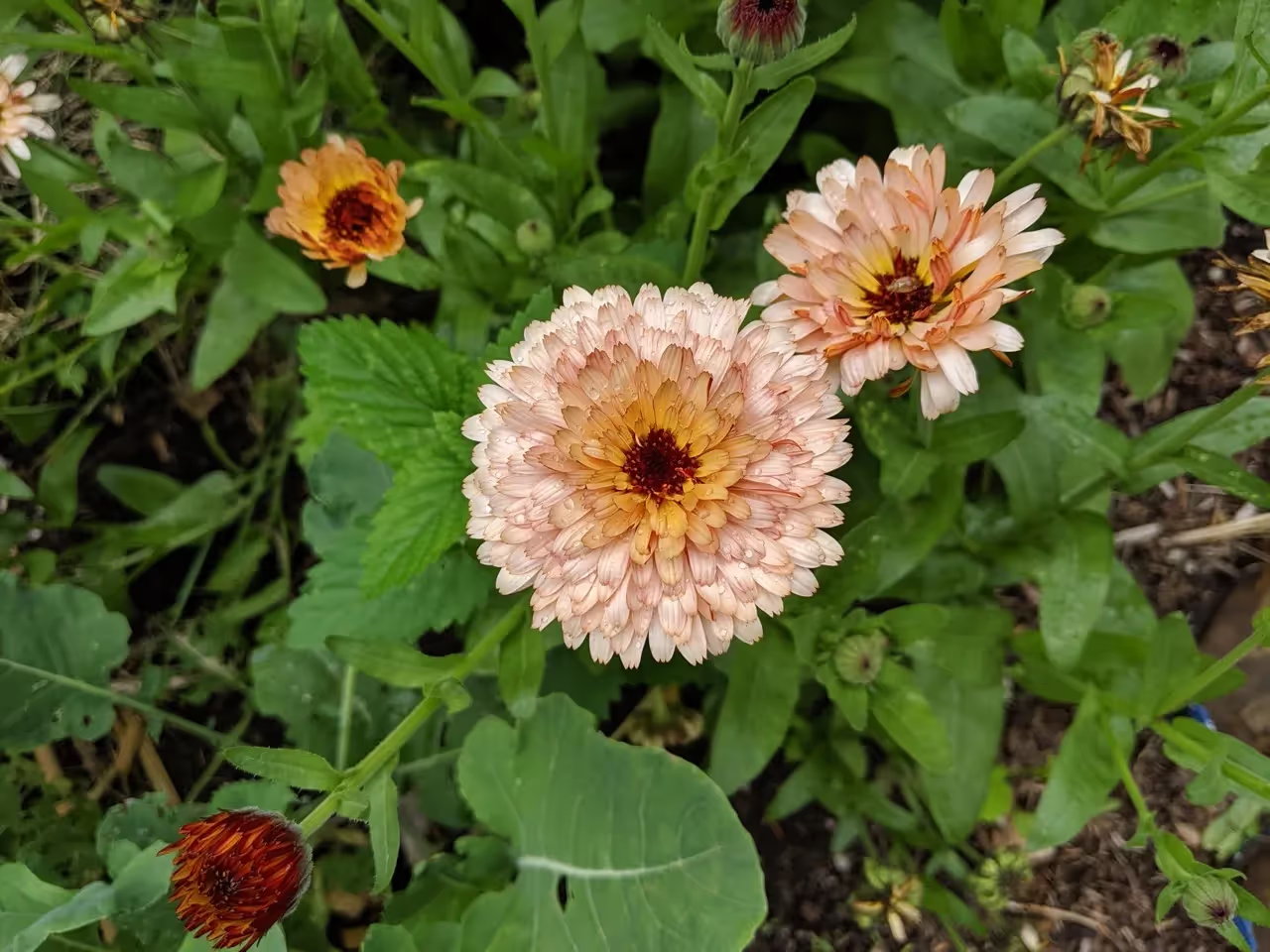
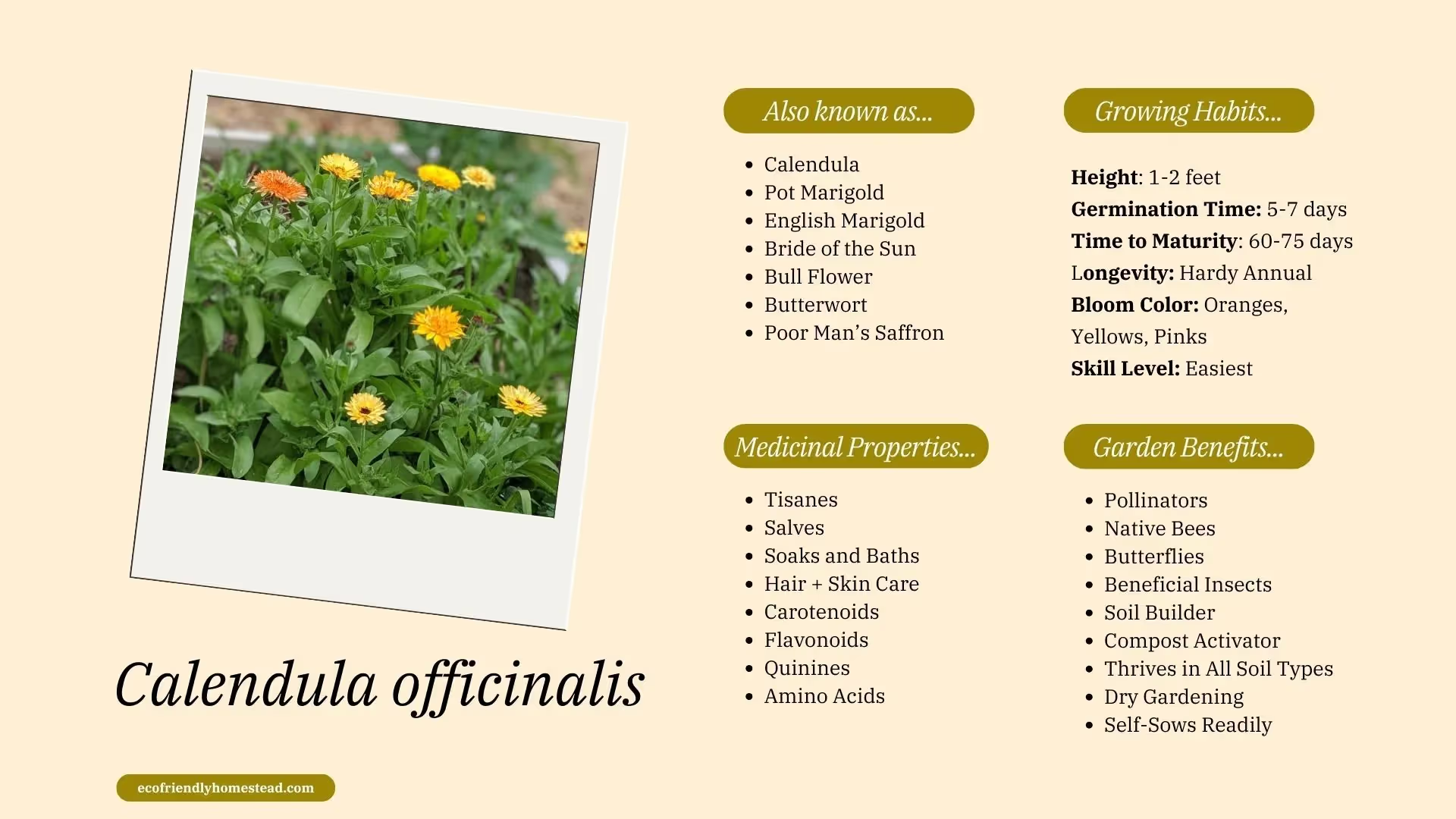
Calendula officinalis: On-trend color. Butterfly magnet. Beneficial insect attractant. Medicinal value. Classic companion plant. Tough-as-nails.
The benefits of calendula for the garden, environment, and human are many. As a bonus, it's extremely easy to grow, so it's great for beginner gardeners looking for success.
Calendula, also known as pot marigold, is one of the must-have plants for any garden.
When I first started to grow calendula, I stuck to the more medicinal standard Resina orange varieties. While I love making medicine from the flowers, I have to admit I got kind of bored of them on an aesthetic level.
But then I discovered the Zeolights and Flashback collections, and even the nearly-neon orange of the Erfurter Orangefarbige variety stops me in my tracks as I walk by it in the garden. These colorful varieties, with kisses of pink, yellow, peach, and even burgundy make flower bouquets really visually interesting.
While the Resina variety is something I'll always grow in my garden - I love having it around for herbal uses - I am so glad that I gave these other colorways a shot.
Calendula also works well in regenerative gardening systems. Its resilience offers gardeners a way to enhance soil health. Also, it attracts pollinators and is a classic companion plant.
Calendula is one of those fool-proof plants that will thrive in any condition. Got drought? Not an issue. Got tough clay soil or too loose sandy soil? No problem. Tight spacing? It will still grow. Container gardening? It’s called pot marigold for good reason!
Calendula is a must-have plant for permaculture and regenerative gardens.
In this article, you’ll learn about:
Starting calendula from seed is extremely easy.
It also allows you to plant a variety of calendula cultivars to meet your needs and goals in the garden.
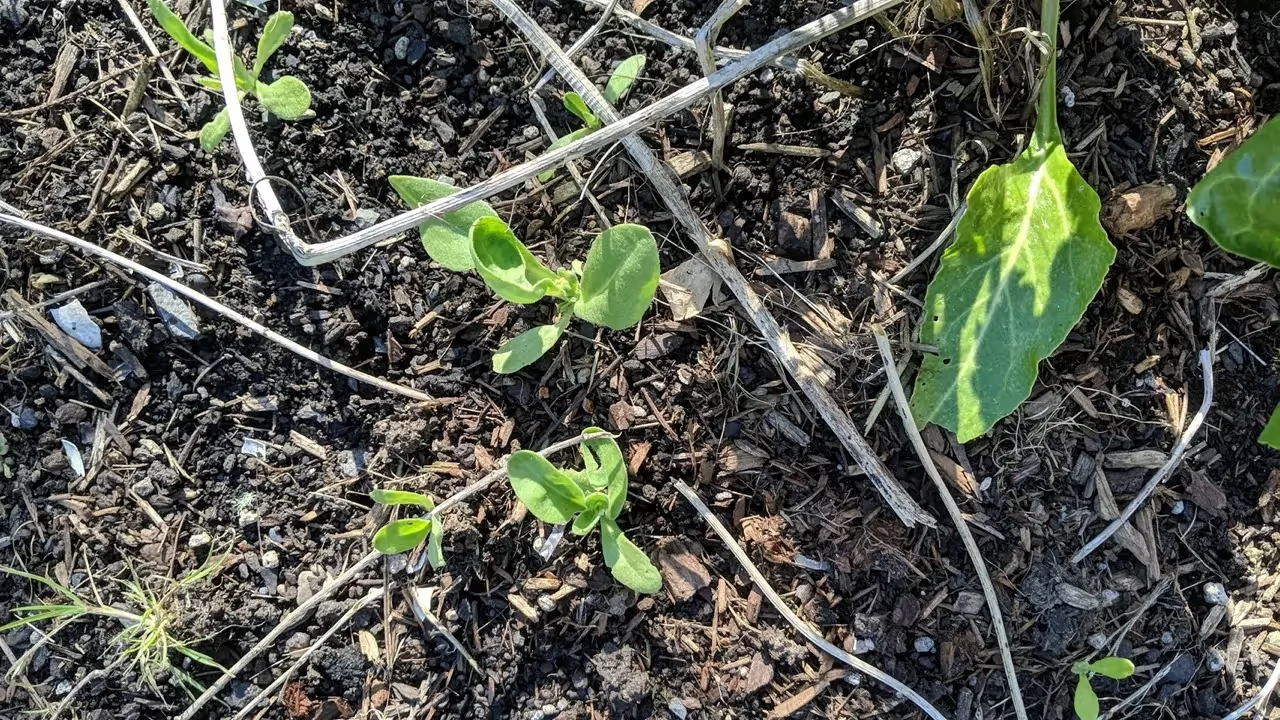
Calendula seeds and plants don’t mind a light frost here and there. Don’t worry too much about your plants getting damaged by a late frost event.
That makes them an ideal candidate for direct sowing in the spring, once your last frost has passed. I usually just direct sow my calendula for this reason - it's a lot easier!

My calendula plants do best when they are 8-10 inches apart.
However, I’ve grown calendula in tight clusters where plants were almost on top of one another. They still bloomed abundantly.
When they self-sow, many seeds will fall in the same place. From that, many plants will germinate close together.
Close spacing can cause fungal issues like powdery mildew. This disease is an issue in wet or coastal climates.
In my dry summer climate, I do not have powdery mildew issues with close plantings of calendula.
Calendula plants don’t need a ton of spacing to grow and bloom. Yet, the more space they have, the more robust they will grow.
Calendula is a very low-fuss plant. According to Utah State University, it doesn’t need fertilizer to thrive. It’s perfect for dry gardening since it can handle low levels of rainfall.
These are some of the benefits that make it a perfect choice for regenerative gardens.
For best results, mulch around your calendula plants once they are established. This will protect the soil and the plants from the heat of the summer, and prevent water evaporation. Organic straw mulch or grass clippings are great for this purpose.
If any pests come to your calendula, don’t worry too much. These pests will bring in beneficial insects, who will then munch on other pests in your garden.
I personally haven’t had calendula pest issues where the flowers were impacted.
Calendula isn’t too different from most plants in that it enjoys healthy well-drained soil and access to regular watering.
However, calendula can still thrive in not-so-ideal conditions.
In my own garden, I’ve seen calendula thrive in our heavy clay soil lawn surrounding the garden. It’s come up in small cracks between pavers, and in cedar wood chip pathways too. These areas do not get watered during our very dry summers, and yet the calendula still grows and blooms.
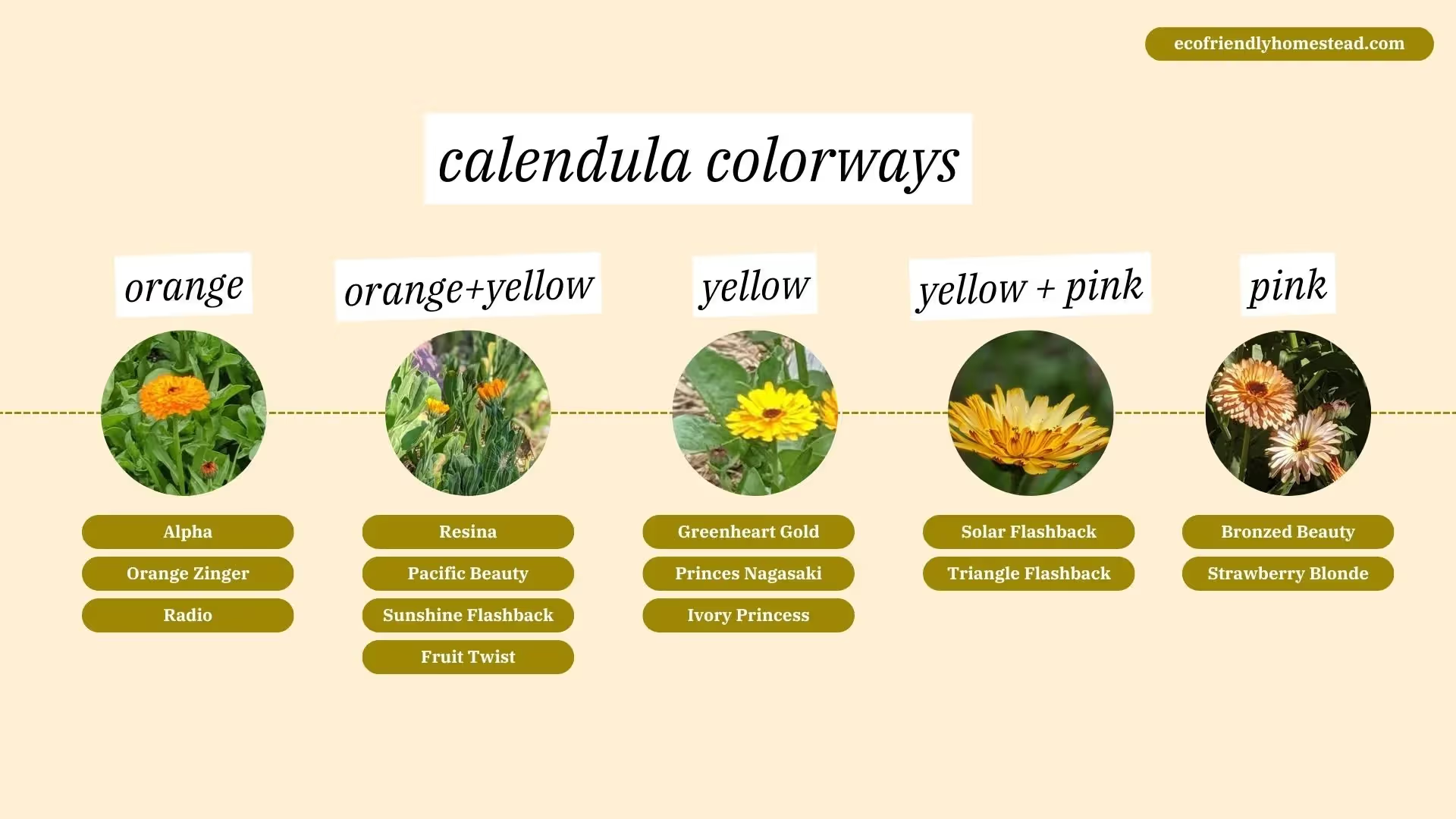

Resina: Has a high resin content for medicinal use. The resin is also an insect attractant/repellant in the garden. Two layers of petals, color varies from yellow to orange. I love making tea and foot soaks from this variety. It's hardy and unfazed by light frosts - it just keeps blooming! Available at Adaptive Seeds.
Alpha: High resin content, looks similar to Resina but all flowers will be orange. Available at Siskiyou Seeds.
Erfurter Orangefarbige aka Orange Zinger: Has a high resin content for medicinal use. I grew this variety this past year and was blown away by its nerly neon color, and multiple layers of petals. It was great in bouquets. Also an insect attractant/repellant in the garden. May have higher resin content than Resina. Lots of layers of petals. Available at Adaptive Seeds or Nature & Nurture Seeds.
Radio: Unique looking orange flower that has petals curled in half so that they look like quills. This variety is from the 1930’s. Available at Wild Garden Seed.

Let me tell you, trying out the Zeolights and Flashback varieties was like discovering a whole new world of colors!
Solar Flashback: Gorgeous pink flowers with deep fuschia and yellow edges. All Flashback varieties originate with Frank Morton of Wild Garden Seed. He named them “flashback” for the flashy color on the undersides of the flower petals. I love how each flower is unique, and they really cheer up any area of the garden. Some of the plants that Ihave in my garden have so many layers of colorful petals! Available at Wild Garden Seeds or Swallow tail Garden Seeds.
Triangle Flashback: Also known as Zeolights. Range of pinks, with some yellow color towards the center of the bloom. Available at Wild Garden Seeds, Swallow Tail Garden Seeds or Uprising Organics.
Bronzed Beauty: Similar to Triangle flashback but with bronzy-red edges and underpetals that are a lovely warm strawberry tone. Available at Swallow Tail Garden Seeds or Adaptive Seeds.
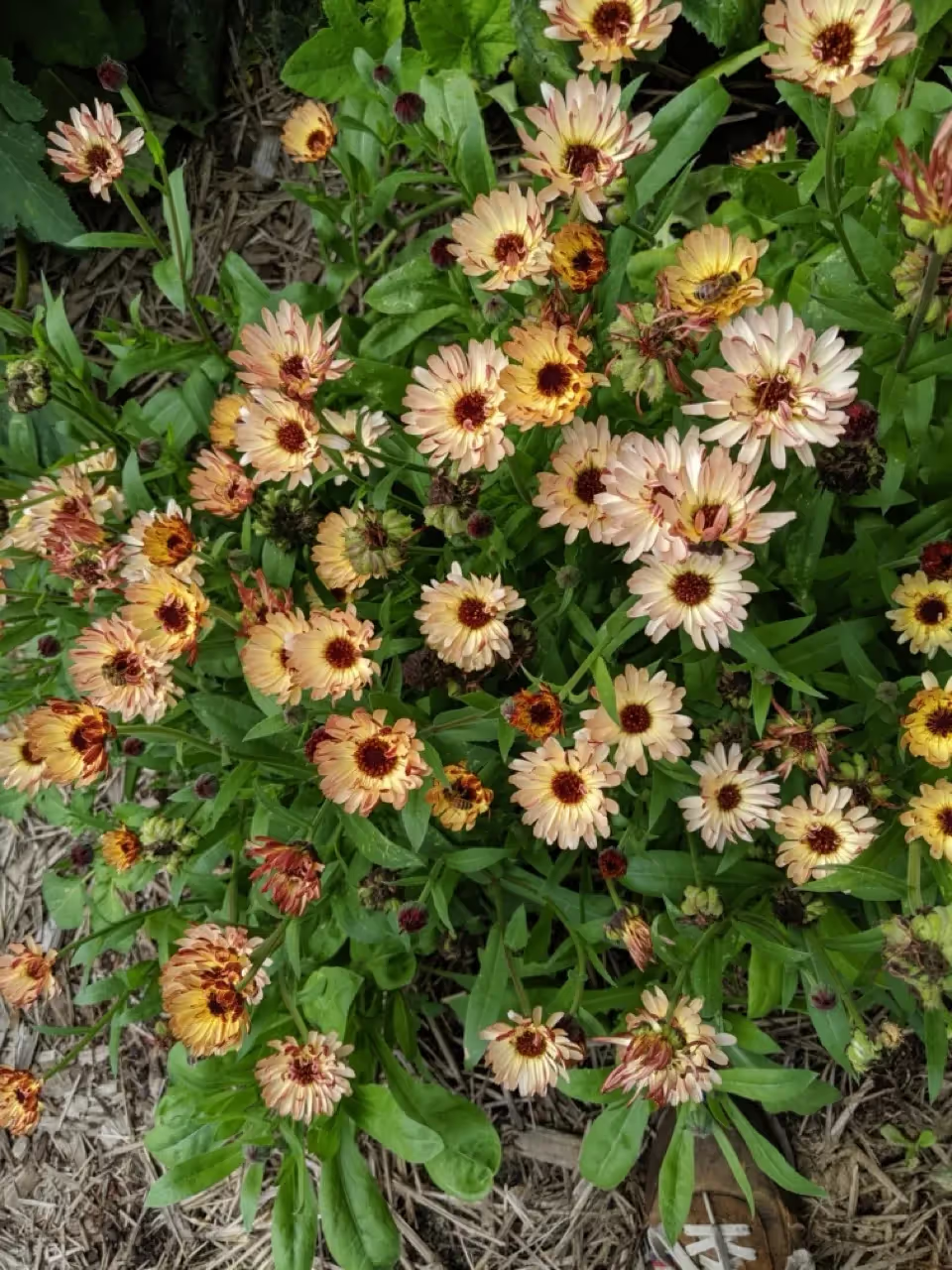
Greenheart Gold: Lovely yellow petals surround a soft green center. Available at Redemption Seeds.
Princess Nagasaki: A cultivar with many layers of pure yellow petals. Center is also yellow. Available at Wild Garden Seed.
Fruit Twist: Dwarf plant with single or double blooms. Flowers range from very pale yellow to deep orange. Available at Swallow Tail Garden Seeds.
Ivory Princess: White to soft yellow blooms, perhaps the closest color to white in a calendula. Available at Swallow Tail Garden Seeds.
-Utah State University, Swallow Tail Garden Seeds
-JCDR, CCMP, Malta Wild Plants 1, Malta Wild Plants 2, Flora of Israel.
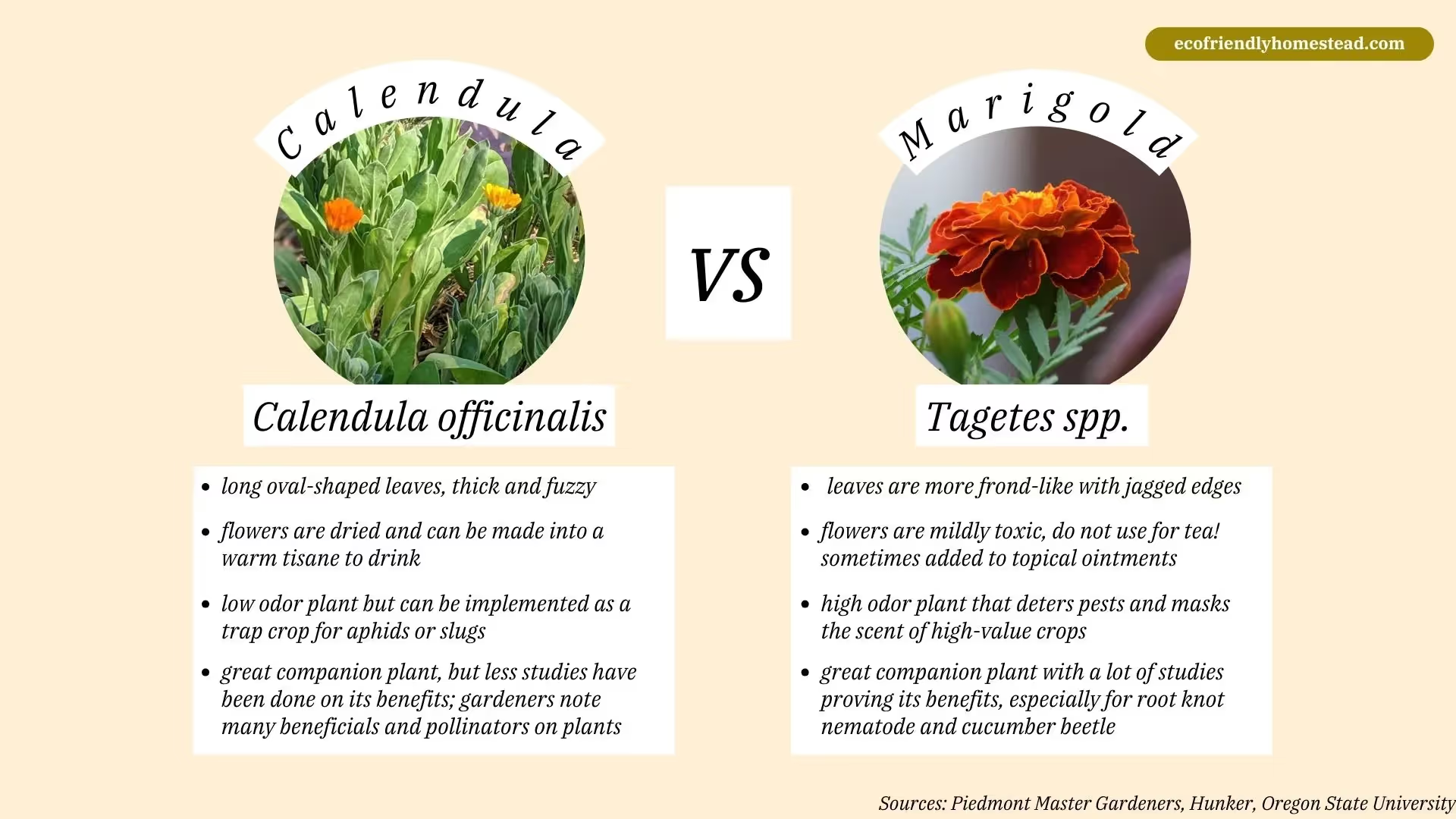
It can get confusing, since calendula is known as "pot marigold" and their color palettes can be very similar.
If you were to look at these two plants side-by-side, you'd see that they don't really have much in common beyond their color.
The leaves on marigold are more frond-like, with jagged edges. In contrast, calendula has long oval-shapped leaves, which are soft and slightly fuzzy when mature.
The flower shape is different too, with calendula looking more like a daisy and marigold looking more like a zinnia, in my opinion.
While they are both perfect for a garden, calendula is used in tea in traditional medicine while marigold is mildly toxic and should not be taken internally.
Also, calendula is native to Europe while marigold is native to the Americas.
-Piedmont Master Gardeners, Hunker, Oregon State University
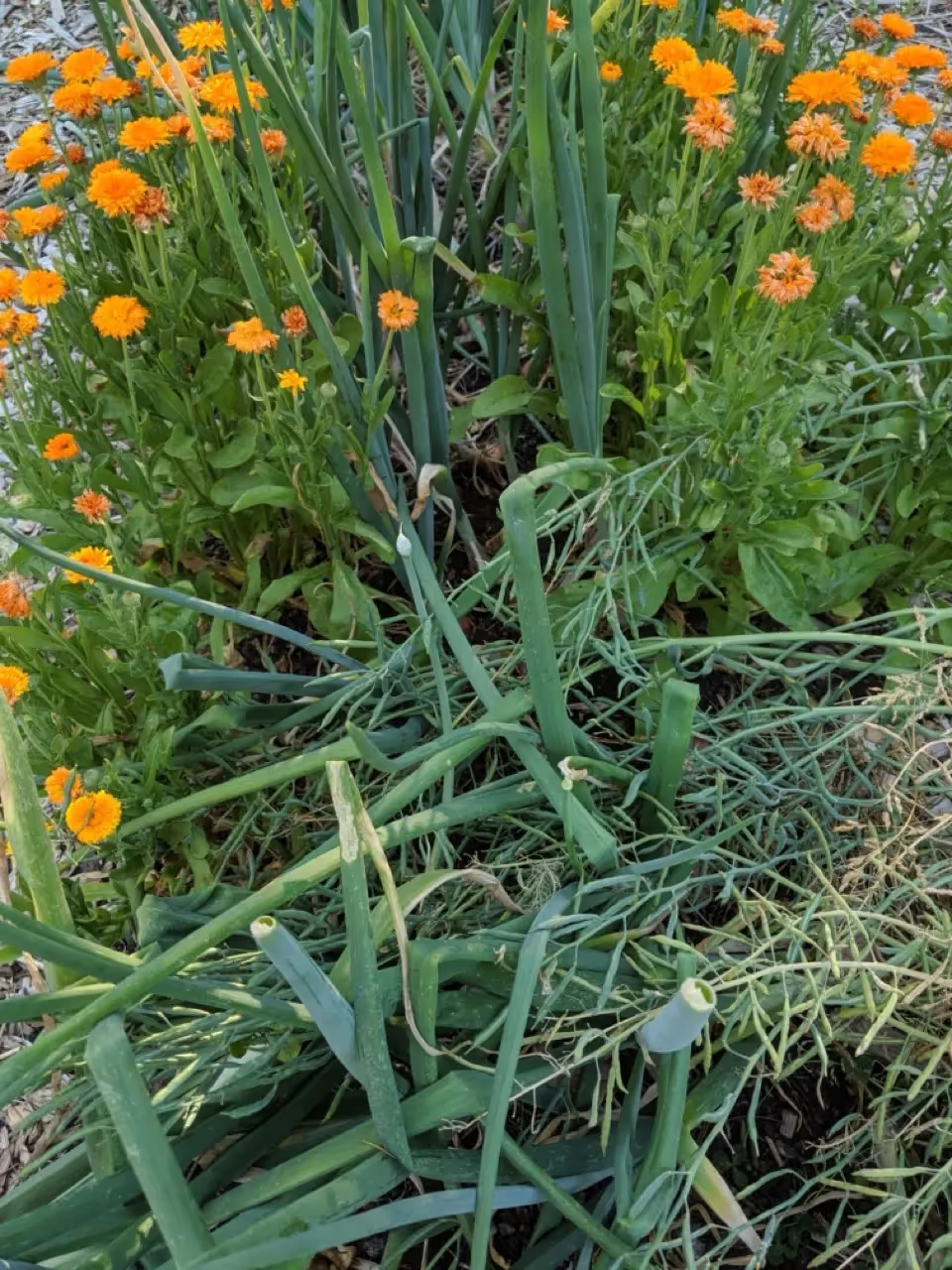
Plants for a Future notes that besides to heavy clay soils, calendula can also grow in sandy soils. It also thrives in areas that are otherwise not very fertile. It can grow in locations that have acidic or alkaline soil pH levels as well.
This makes calendula an excellent plant to sow where nothing else seems to grow.
In the same way that calendula can be a salve for skin irritations and wounds, it can also be a salve of sorts for the soil.
In a way, you can plant calendula as a cover crop in poor soil. Let it self sow, and after it grows 8-10 inches, mulch the area with its leaves. I've seen how even when it's cut back, the plant will grow again to provide more green material!
This will help your soil to have organic matter added to it. As a bonus, the roots of the calendula will help to break up clay soil. The roots, when they decompose, can also add organic matter to clay and sandy soils alike.
As mentioned above, calendula is perfect for dry gardens, and is a low-input plant. It does not need fertilizer to thrive.
Calendula helps control:
Read on for more details on how it works for each pest!
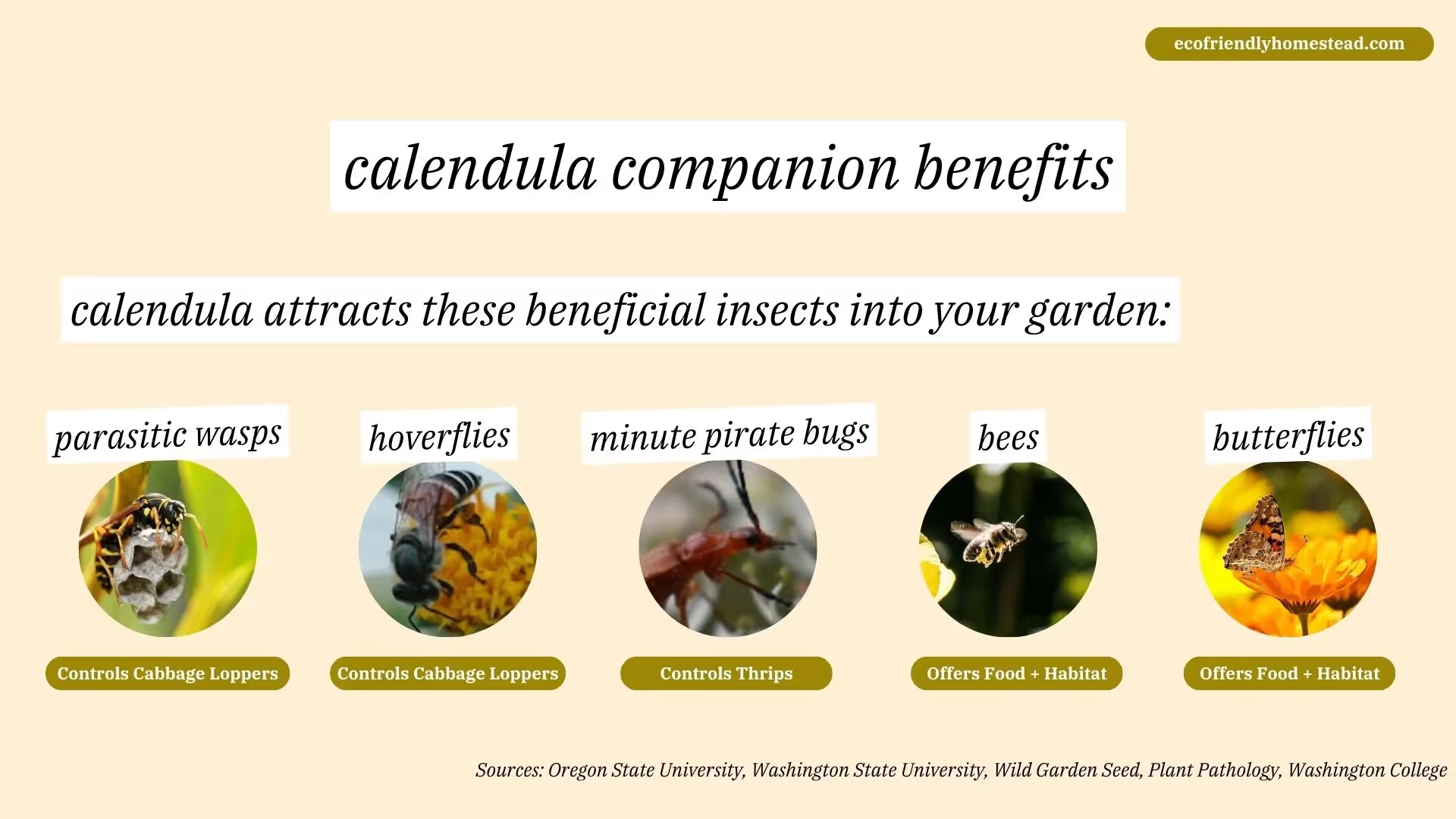
Pam Zaklan, Master Gardener through Oregon State Extension Service, has been experimenting with companion planting in her own garden for over 50 years.
She’s found that calendula can help deter squash bugs from winter squash. The odor of the flowers isn’t enjoyed by the squash bugs, and they also probably mask the scent of the squash plants.
Pam also plants calendulas as a trap crop for aphids. She has found that calendulas planted next to roses or lettuce keeps the them aphid-free. Instead, the aphids flock to the calendula plants.
Master Gardener Claudia Steen, MS, with Washington State University notes that calendula attracts parasitic wasps and hoverflies.**
These two beneficial insects eat cabbage loppers. This makes calendula a great companion plant for cruciferous crops to prevent damage.
Frank Morton, renowned plant cultivator at Wild Garden Seed, shares that calendula attracts minute pirate bugs, which in turn eat thrips.
While some nematodes are beneficial, others can cause problems in the garden.
According to a study published in Plant Pathology, calendula flowers applied to nematode infested soil decreases the population. The flowers have a reproduction-halting effect, which caused up to a 95% reduction in the pest! I'd be curious to see if a compost tea of calendula blooms would work similarly.
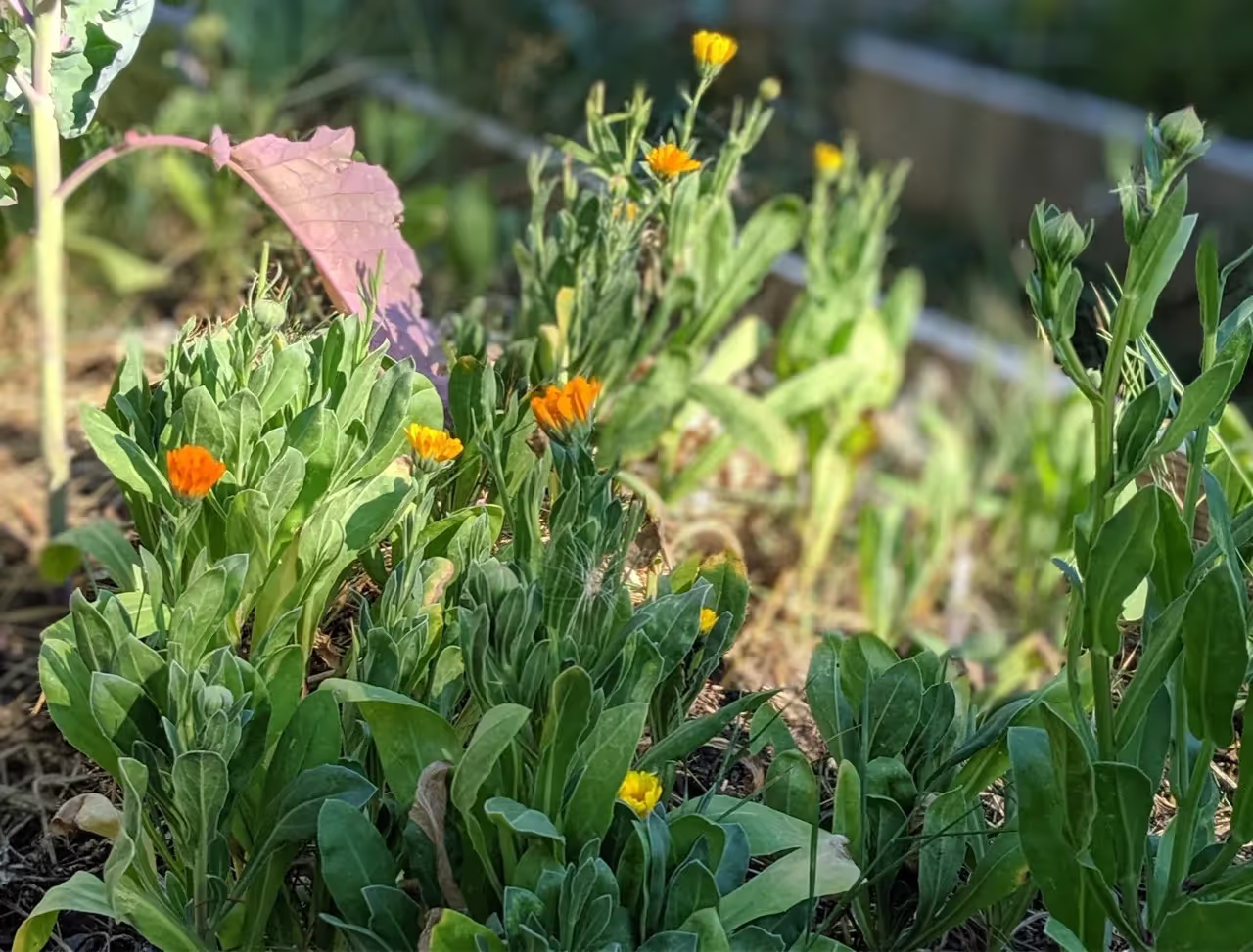
One of the principles of permaculture is to have multiple functions from each plant. With the variety of benefits that calendula has in the garden and for humans, this plant is a great option for permaculture gardens.
As Washington College mentions, calendula provides a habitat for butterflies, bees, and beneficial insects.
For humans, calendula can be made into a tea, applied topically in salves or compresses, or added to baths and foot soaks.
Calendula has been traditionally utilized as a dye plant, offering yellow and orange hues.
Calendula self-sows readily in the garden so once you plant it, you don’t need to do much work to get it to show up in successive seasons.
Calendula’s self-sowing tendencies will yield you an abundance of the plant in future seasons. You’ll have so much calendula that you can use the foliage as green material in your compost.
In my garden, I’m able to chop back calendula foliage to use as compost material or mulch. If the roots are left in place, the calendula will grow back, providing more foliage in a few week’s time.
PFAF mentions that the compost activator “Quick Return” as outlined in Commonsense Compost Making includes calendula flowers to support the decomposition process.
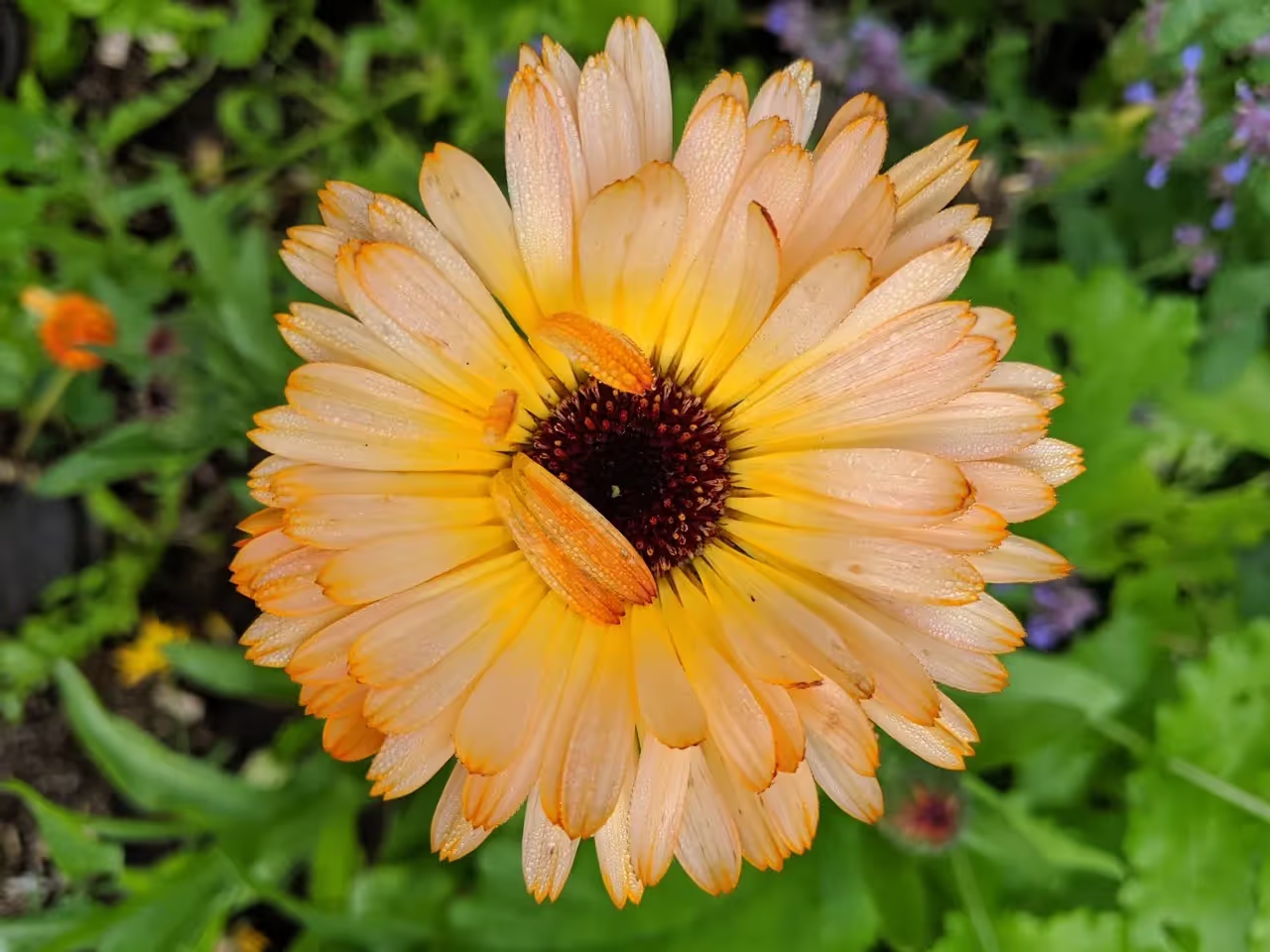
Calendula is an easy addition to add bright color to any garden. Plus, it has something for everyone: healing properties for the herbalist, soil health support for the regenerative gardener, and pest control for the organic advocate.
If you are looking for a new plant to add biodiversity and vibrance into your garden, look no further than Calendula officinalis.
And once you grow them, it's really easy to save calendula seeds so that you always have them in your garden!